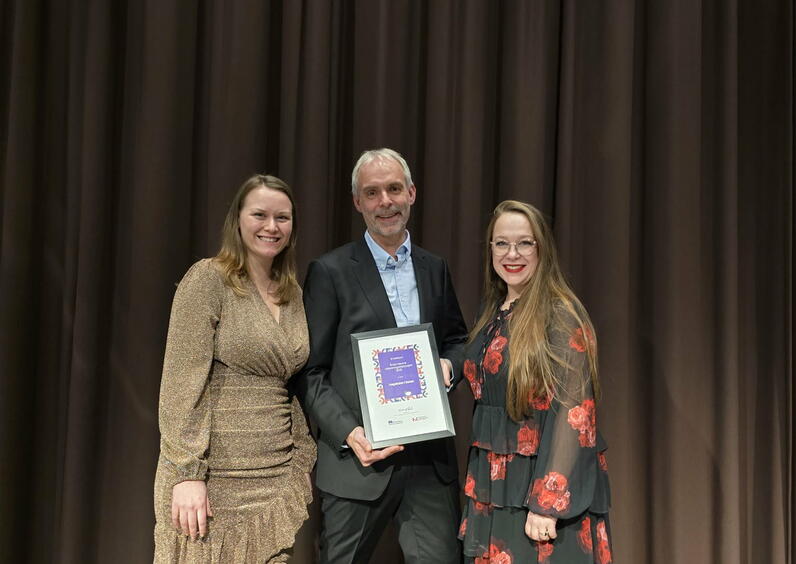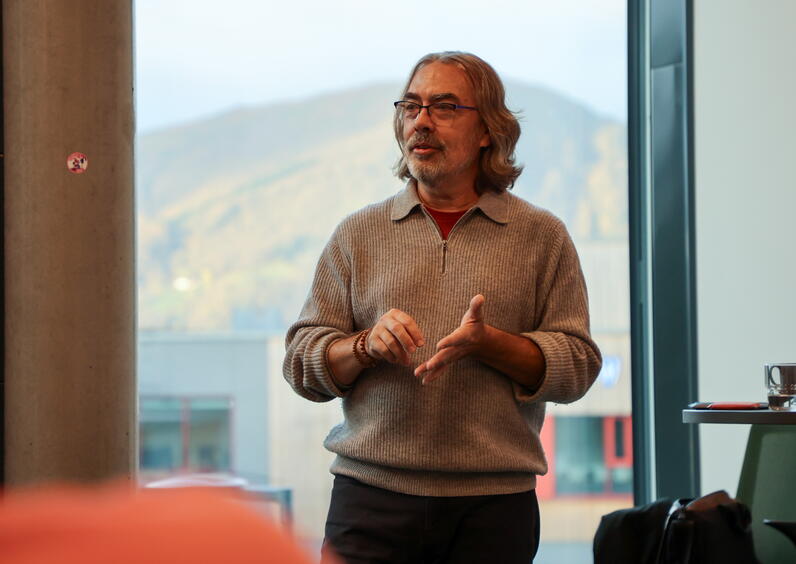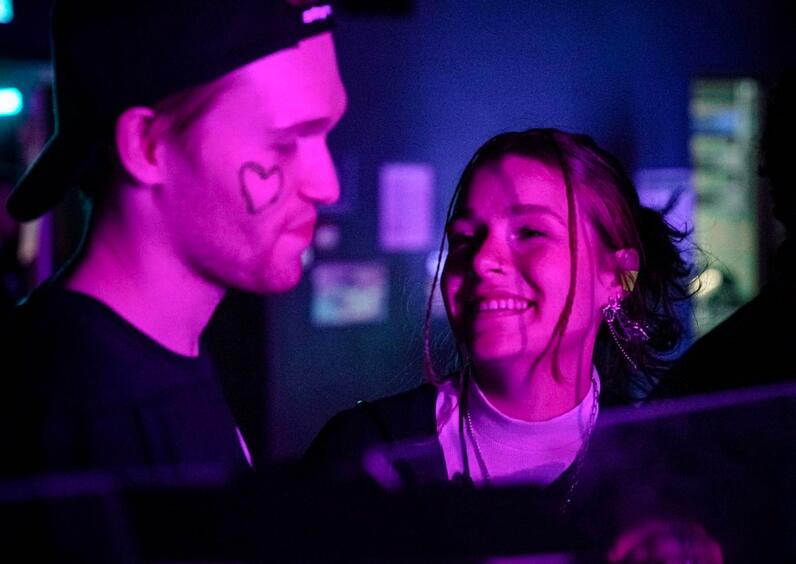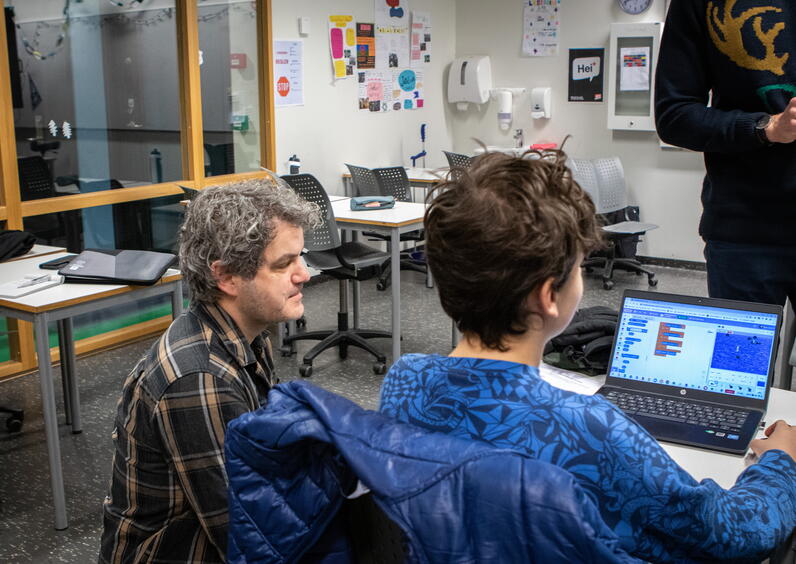Selfies - impression management and staging
The portrait was previously reserved for the artist - now we are almost bombarded, said Associate Professor at the Faculty of Media and Journalism Erling Sivertsen to a packed auditorium in the Berte Kanutte-building today.
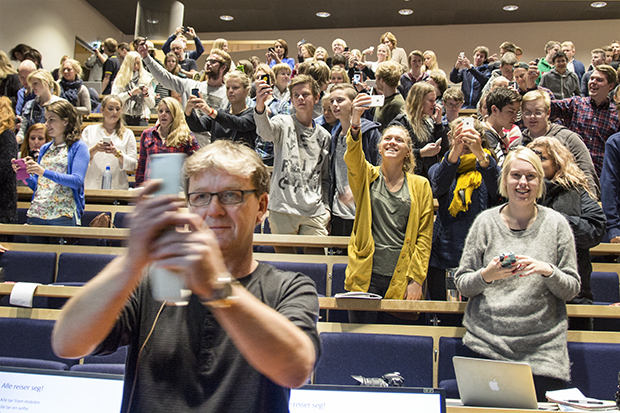
Associate Professor at the Faculty of Media and Journalism Erling Sivertsen encouraged the audience to take a selfie and share it on social media.
"Selfie" was the new word in 2013, but the self portrait is not a new fenomenon. We have been committed ourselves and our own picture for a long time. Artists such as Van Gogh and Edvard Munch are for instance known to have painted self-portraits. Robert Cornelius is considered as the one who took the first photographic self-portrait in 1839. Selfies have spread to all layers, the pope, presidents, politicians and pop stars are taking pictures of themselves and posting them in social medias.
─ Selfies is a form of spontaneity, self-reflection, self-exploration, self-presentation and self-staging, said Sivertsen.
From camera for few the camera for the masses
Photographing was reserved for the few for nearly a century, but mass production of cameras in the 1930s made it more common. Photographing was as a private matter and was often done in special occasions.
─ Selfies however, is a public matter and a separate genre that is strongly linked to social media. The photography becomes increasingly influenced by the application, and therefor less a photography. The app gives the photographs a recognizable expression, creates global user experience and plays the same narrative form. This is called "softwareifisation" said Sivertsen.
Why do we take selfies?
Sivertsen argue that part of the reason behind why we take selfies is that it is a form of impression management and staging.
─ There is also exhibitionism and narcissism in the picture, and not least the identity hunt. It is a self-exploration, a self-representation, and a hunt for the most possible likes.
The lecture was a held as a part of the The National Science Week (Forskningsdagene).

